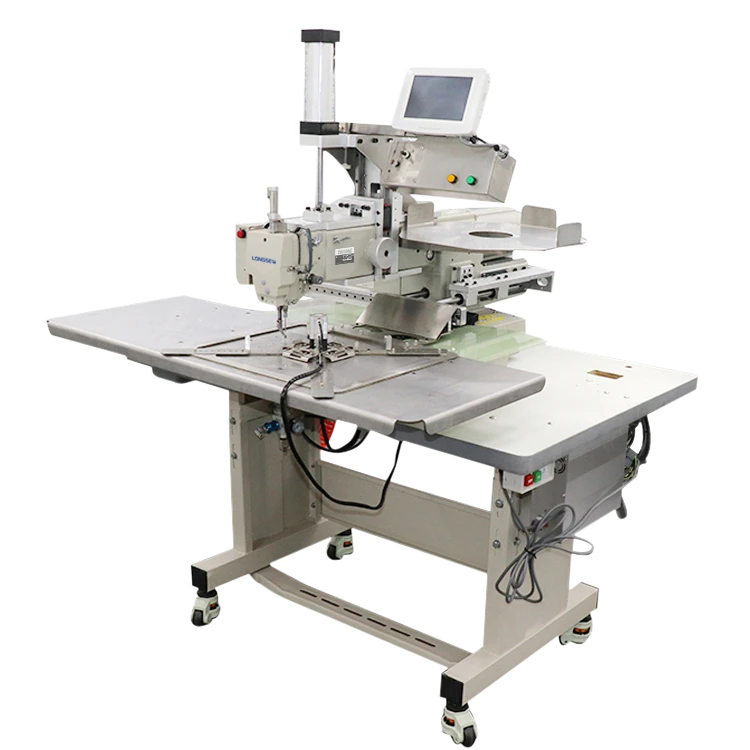types of lockstitch sewing machine
Types of Lockstitch Sewing Machines
Lockstitch sewing machines are fundamental tools in the textile industry, widely used for sewing fabric together. They work by utilizing two threads one is the upper thread supplied from the needle, and the other is the lower thread wound on a bobbin. The lockstitch sewing machine creates a secure stitch by interlocking these two threads, making it ideal for a variety of applications, from garment manufacturing to quilting. In this article, we will explore the different types of lockstitch sewing machines, highlighting their features and uses.
1. Industrial Lockstitch Sewing Machines
Industrial lockstitch sewing machines are designed for high-volume production environments. These machines are robust, fast, and efficient, capable of stitching multiple layers of heavy materials such as denim, canvas, or leather. They typically offer features like automatic thread trimming, indexing, and programmable sewing patterns. The most common models in this category include
- Cylinder Bed Lockstitch Machine This machine has a cylindrical arm, allowing for ease of sewing tubular items like sleeves and cuffs. Its design facilitates maneuvering around curved seams, making it a favorite in garment factories. - Flat Bed Lockstitch Machine This is perhaps the most common type used in garment manufacturing. The flat bed surface provides stability and is ideal for sewing flat pieces of fabric. It can handle a variety of fabrics and offers different presser foot options for various sewing applications.
2. Domestic Lockstitch Sewing Machines
Domestic lockstitch sewing machines cater to home sewists and hobbyists. They are typically smaller, lightweight, and designed for ease of use. Many models come with built-in stitches, such as zigzag and stretch stitches, alongside the standard lockstitch. Key types include
- Mechanical Sewing Machines These machines rely on manual adjustments for stitch selection and tension settings. They are ideal for beginners due to their simplicity and reliability, allowing users to learn essential sewing techniques.
- Electronic Sewing Machines Equipped with electronic controls, these machines offer a wider variety of stitch options and can automatically adjust settings for optimal sewing. Electronic machines often include features like LED displays and one-touch buttons for increased convenience.
types of lockstitch sewing machine

- Computerized Sewing Machines These are the most advanced domestic sewing machines, offering extensive programming capabilities. Users can create and customize stitching patterns, and many machines come equipped with features such as automatic needle threading and adjustable stitch width and length.
3. Specialty Lockstitch Sewing Machines
Specialty lockstitch sewing machines are tailored for specific sewing tasks, enhancing versatility in production. Some notable types include
- Walking Foot Lockstitch Machine This type features a walking foot mechanism that allows for even feeding of multiple layers of fabric, which is particularly useful when working with quilts or slippery materials. It helps prevent puckering, ensuring consistent stitch quality.
- Quilting Machine Specifically designed for quilting, these machines often come with a larger throat space to accommodate bulky projects. They may also feature specialized foot attachments for various quilting techniques, such as free-motion quilting.
- Embroidery Lockstitch Machines While primarily for embroidery, these machines utilize a lockstitch mechanism to create intricate designs. They come with built-in embroidery patterns and allow users to import custom designs for personalized projects.
Conclusion
Choosing the right type of lockstitch sewing machine depends on the specific needs of the user—whether for industrial production or home crafting. Each category offers machines that are specialized for certain tasks, ensuring optimal results for a variety of sewing projects. As technology advances, we see continuous innovations in the design and capabilities of lockstitch sewing machines, making them an invaluable asset in the world of textiles. Whether you are a professional tailor or a sewing enthusiast, understanding the different types of lockstitch machines will help you select the perfect tool for your projects.
-
Heavy Duty Leather Sewing Machine: A Must-Have for Professional LeatherworkNewsMay.28,2025
-
Leather Sewing Machine: Essential for High-Quality LeathercraftNewsMay.28,2025
-
Extra Heavy Duty Sewing Machine for Premium Leather ApplicationsNewsMay.28,2025
-
Walking Foot Cylinder Arm Sewing Machine: Precision and Power CombinedNewsMay.28,2025
-
Industrial Cylinder Arm Sewing Machine: Engineered for High-Performance StitchingNewsMay.28,2025
-
Cylinder Bed Sewing Machine: A Powerful Solution for Precision StitchingNewsMay.28,2025
-
Zigzag Sewing MachineNewsMay.12,2025





























